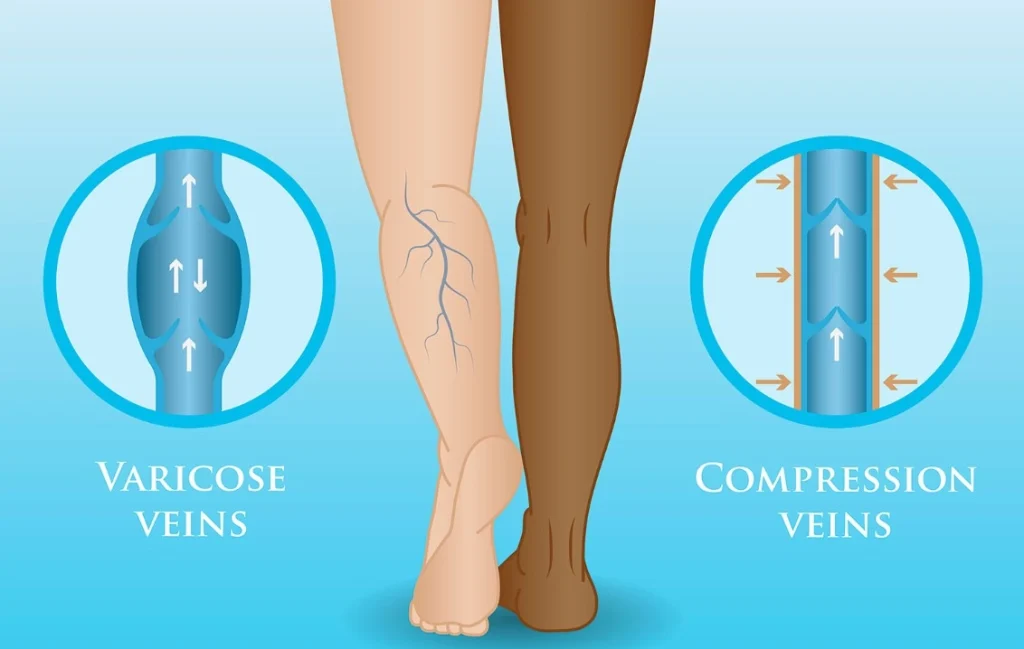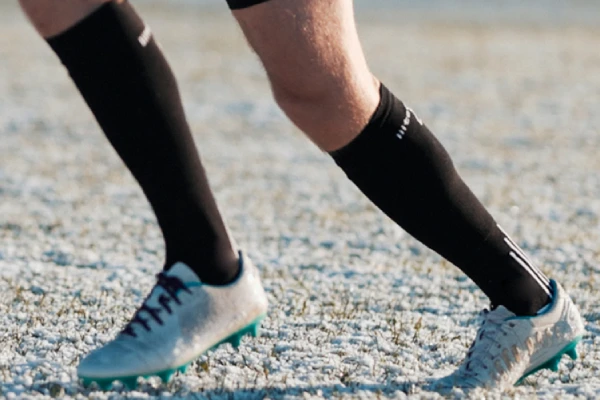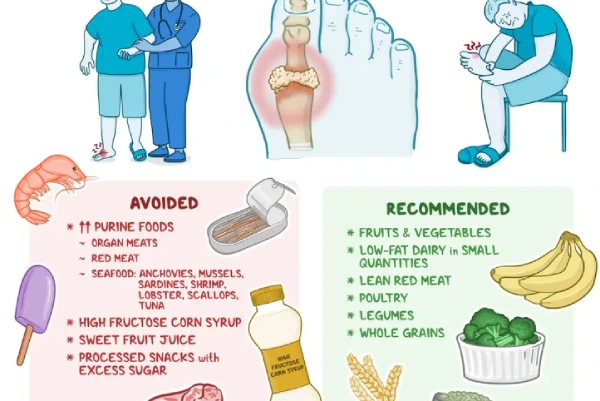Introduction: Relief or Risk?

Gout is a painful form of inflammatory arthritis caused by uric acid crystal buildup in the joints. Flares often bring intense pain, swelling, and redness, most commonly in the big toe. While medications remain the cornerstone of treatment, many sufferers look for complementary options to reduce swelling and improve circulation.
That leads to the key question: Are compression socks good for gout?
The short answer — avoid compression during an acute gout flare, but mild compression socks (15–20 mmHg) may help manage residual swelling and circulation discomfort after the worst pain subsides. Always consult your doctor before trying compression therapy for gout.
How Compression Socks Help with Gout Management

What Causes Gout and How Compression Helps
Gout is a form of inflammatory arthritis characterized by sudden, severe pain, redness, and swelling in joints, often affecting the big toe. This condition arises when there’s an accumulation of uric acid in the bloodstream, leading to the formation of needle-like crystals that deposit in and around joints, causing intense inflammation. Factors contributing to elevated uric acid levels include dietary choices rich in purines (found in foods like red meat and seafood), excessive alcohol consumption, obesity, certain medications, and genetic predisposition.
Key Benefits of Compression Socks for Gout Relief
- Compression for Gout Swelling and Edema: By applying gentle, consistent pressure, these socks prevent fluid from building up in the lower leg joints, which is essential for managing the chronic swelling often present even after a flare-up.
- Pressure Support for Pain Management: By stabilizing the area and minimizing fluid accumulation, the gentle pressure can ease discomfort and support mobility during recovery periods.
When Compression Socks Are Bad for Gout (and Who Should Avoid Them)

Searches like “compression socks bad for gout” or “is compression good for gout” reflect real confusion — so here’s the medical truth:
- During flare-ups: The joint is inflamed, hot, and hypersensitive; added pressure from compression socks can worsen pain.
- Skin damage or infection: Avoid if skin is thin, broken, or infected.
- Peripheral Neuropathy (nerve damage): Reduced sensation means you might not notice excessive tightness.
- Peripheral Artery Disease (PAD): Compression can dangerously restrict already compromised blood flow.
- Severe edema from heart failure: Compression may worsen systemic congestion.
If you have any of these conditions, skip compression or seek a doctor’s assessment first.
How to Choose the Best Compression Socks for Gout Relief Effectively

What Compression Level Is Best for Gout?
- For Mild Edema: A lighter 8-15 mmHg may be considered, but always consult a healthcare professional for a personalized recommendation.
- General Recommendation: For gout relief, a mild to moderate level of 15-20 mmHg is generally recommended. This range provides adequate pressure to reduce swelling without hindering circulation.
Material and Fit: Choosing the Best Socks for Gout Sufferers
- Graduated Compression: The design should be tighter at the ankle and gradually looser toward the knee to promote optimal blood flow (venous return).
- Breathable & Skin-Friendly Materials: Use moisture-wicking, hypoallergenic materials like Merino wool or medical-grade nylon to reduce irritation, a common issue for patients with sensitive feet.
- Fit is Paramount: An improper fit can worsen symptoms by intensifying pressure on affected joints. Ensure proper sizing is available.
When (and How) to Wear Compression Socks for Gout Safely

Wondering “should you wear compression socks with gout,” or “can you wear compression socks after gout attack?”
Follow these timing guidelines:
- Not during a flare: Heat, redness, and throbbing pain = NO compression.
- After inflammation subsides: When pain decreases and skin cools, light compression can aid fluid drainage.
- Between flares: Mild compression helps manage swelling, especially for those with long sitting or standing periods.
- Stop immediately if you notice numbness, coldness, or color change.
Ace Bandage or Compression Wraps for Gout?
Queries like “ace bandage for gout” or “compression bandage for gout” often reflect confusion. Tight wrapping during a gout flare is not advised. It can increase pain and restrict circulation. For flare relief, stick with rest, elevation, ice, and medication under professional guidance.
Lifestyle and Medical Management — Beyond Compression Socks

Compression socks can support circulation, but cannot cure gout.
Lasting relief comes from:
- Medication: Allopurinol, febuxostat, colchicine, NSAIDs under medical direction.
- Diet: Limit purine-rich foods (red meat, shellfish), alcohol, and sugary drinks.
- Hydration: Drink plenty of water to help flush uric acid.
- Weight control & movement: Maintain a healthy body weight and gentle exercise between attacks.
- Medical follow-up: Regular uric acid monitoring prevents recurrence.
FAQs
If the doctor says I can try compression stockings to relieve gout-related swelling, what is the best pressure level?
For gout-related swelling, mild (8-15 mmHg) to moderate (15-20 mmHg) pressure is generally recommended. The choice should be based on your doctor’s personalized advice, taking into account your overall health.
How do your materials address skin sensitivity common in gout patients?
We use hypoallergenic, breathable fabrics like merino wool and medical-grade nylon, proven to reduce irritation. Antimicrobial treatments are optional to enhance hygiene for sensitive users.
Can compression stockings cure my gout?
No, you cannot. Compression stockings are not a cure for gout; they can only be used as an adjunct to help manage certain symptoms, such as swelling and circulation problems. Treatment of gout requires medications and lifestyle changes prescribed by a doctor to control uric acid levels.
Is it safe to wear compression stockings during a severe gout attack?
Usually not safe. During an acute gout attack, the joints are extremely painful and swollen, and any additional pressure may exacerbate the discomfort. Compression stockings should be considered under the guidance of a physician after the exacerbation has resolved.
How do I know if my compression stockings are too tight, especially if I have gout?
Compression stockings may be too tight if you experience increased pain, numbness, tingling, skin discoloration, or cold toes. The right compression stockings should feel comfortable and supportive, not painful or restrictive.
